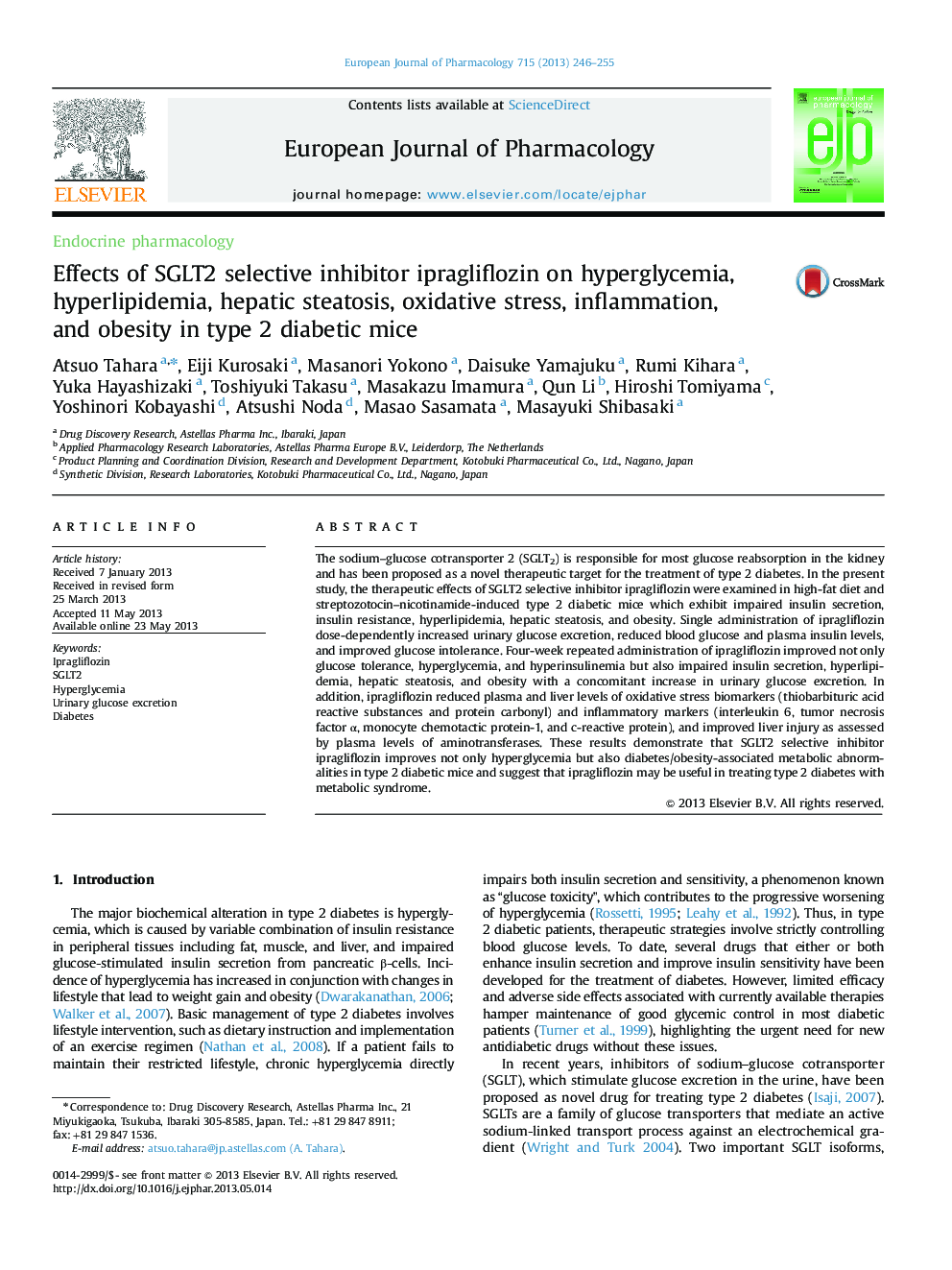| Article ID | Journal | Published Year | Pages | File Type |
|---|---|---|---|---|
| 2532097 | European Journal of Pharmacology | 2013 | 10 Pages |
The sodium–glucose cotransporter 2 (SGLT2) is responsible for most glucose reabsorption in the kidney and has been proposed as a novel therapeutic target for the treatment of type 2 diabetes. In the present study, the therapeutic effects of SGLT2 selective inhibitor ipragliflozin were examined in high-fat diet and streptozotocin–nicotinamide-induced type 2 diabetic mice which exhibit impaired insulin secretion, insulin resistance, hyperlipidemia, hepatic steatosis, and obesity. Single administration of ipragliflozin dose-dependently increased urinary glucose excretion, reduced blood glucose and plasma insulin levels, and improved glucose intolerance. Four-week repeated administration of ipragliflozin improved not only glucose tolerance, hyperglycemia, and hyperinsulinemia but also impaired insulin secretion, hyperlipidemia, hepatic steatosis, and obesity with a concomitant increase in urinary glucose excretion. In addition, ipragliflozin reduced plasma and liver levels of oxidative stress biomarkers (thiobarbituric acid reactive substances and protein carbonyl) and inflammatory markers (interleukin 6, tumor necrosis factor α, monocyte chemotactic protein-1, and c-reactive protein), and improved liver injury as assessed by plasma levels of aminotransferases. These results demonstrate that SGLT2 selective inhibitor ipragliflozin improves not only hyperglycemia but also diabetes/obesity-associated metabolic abnormalities in type 2 diabetic mice and suggest that ipragliflozin may be useful in treating type 2 diabetes with metabolic syndrome.
